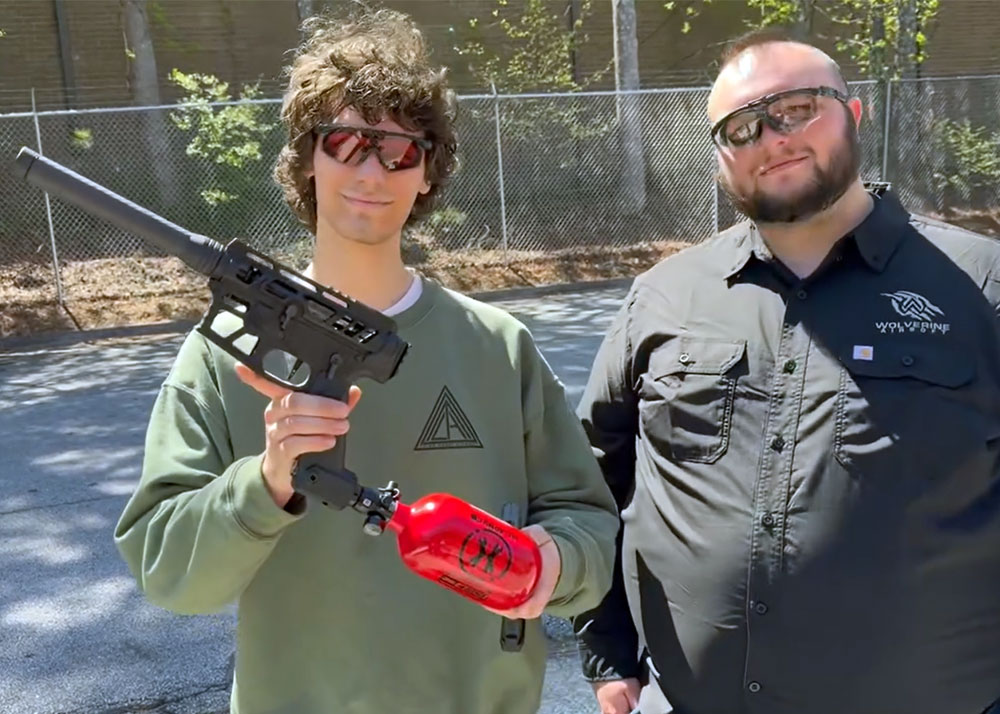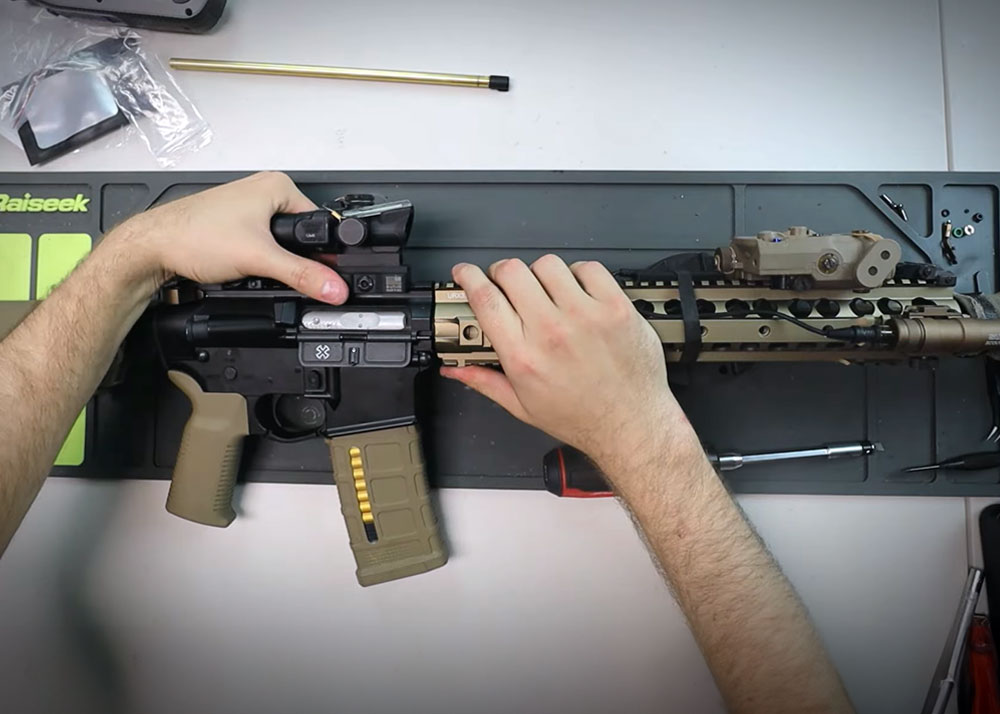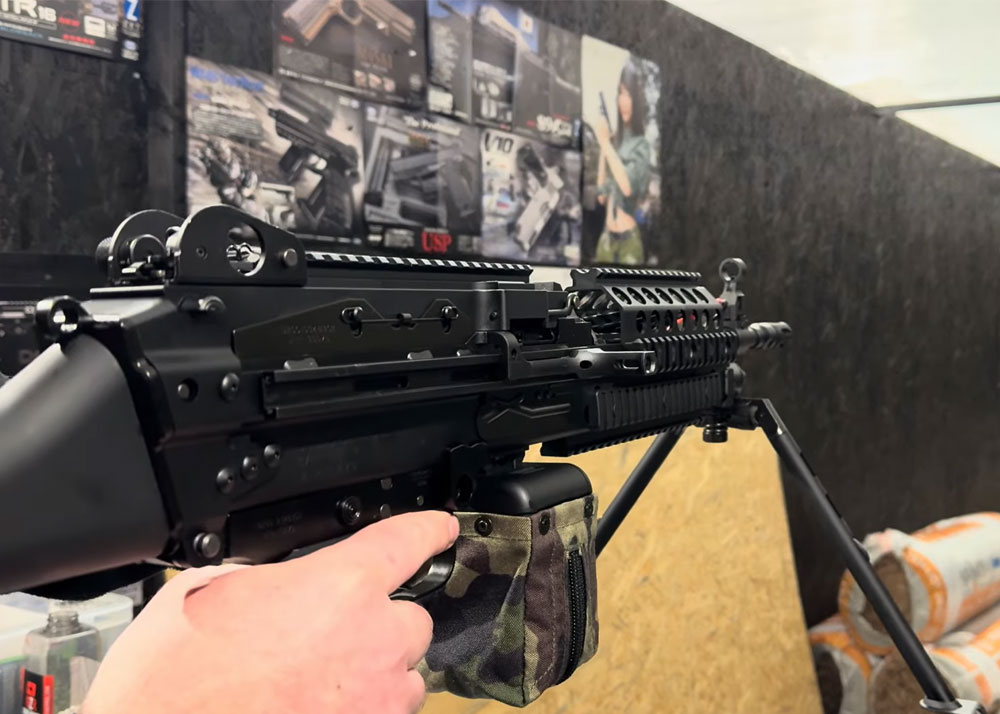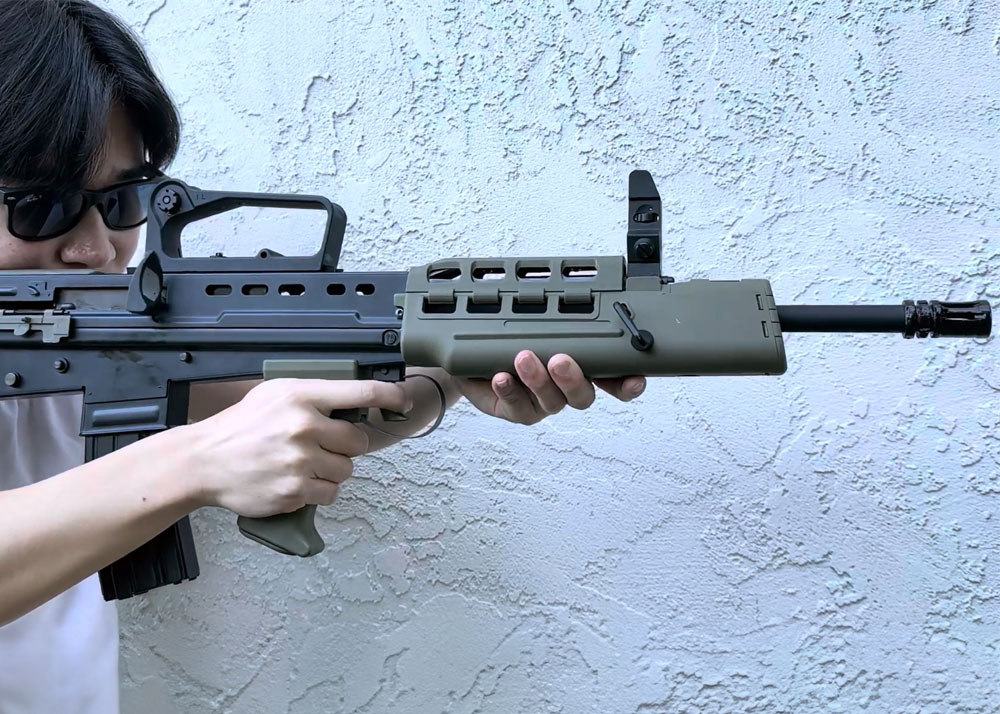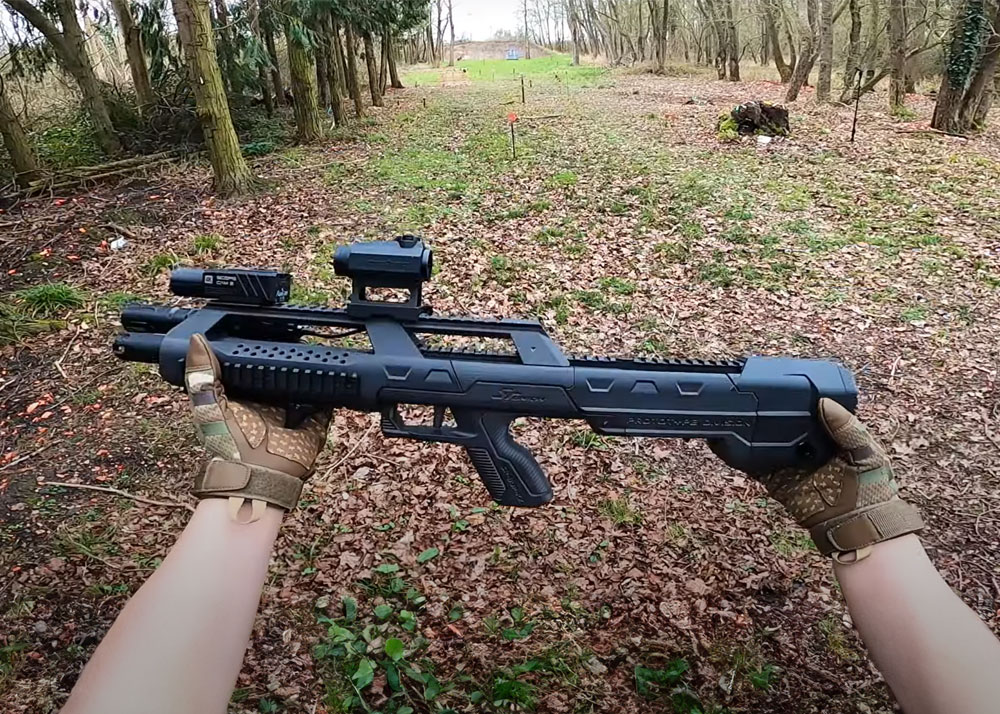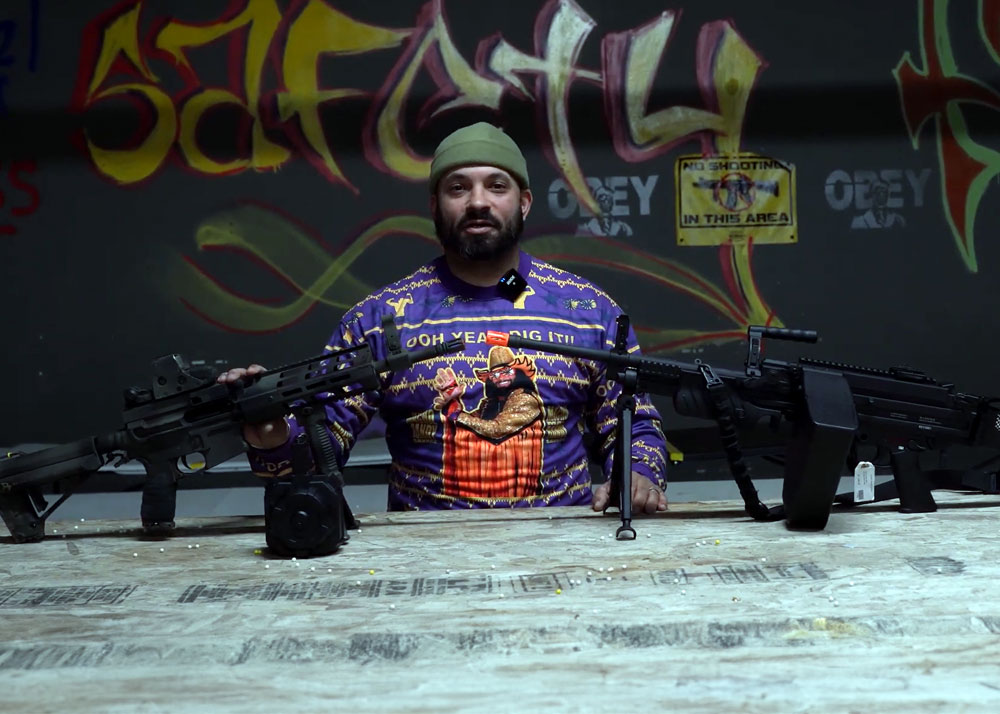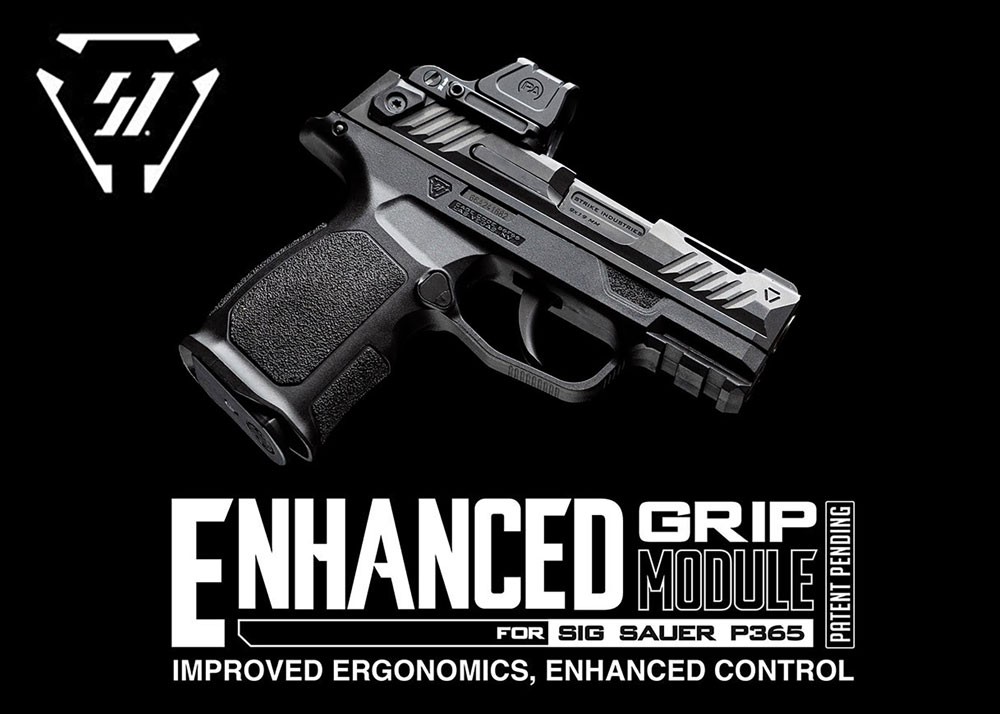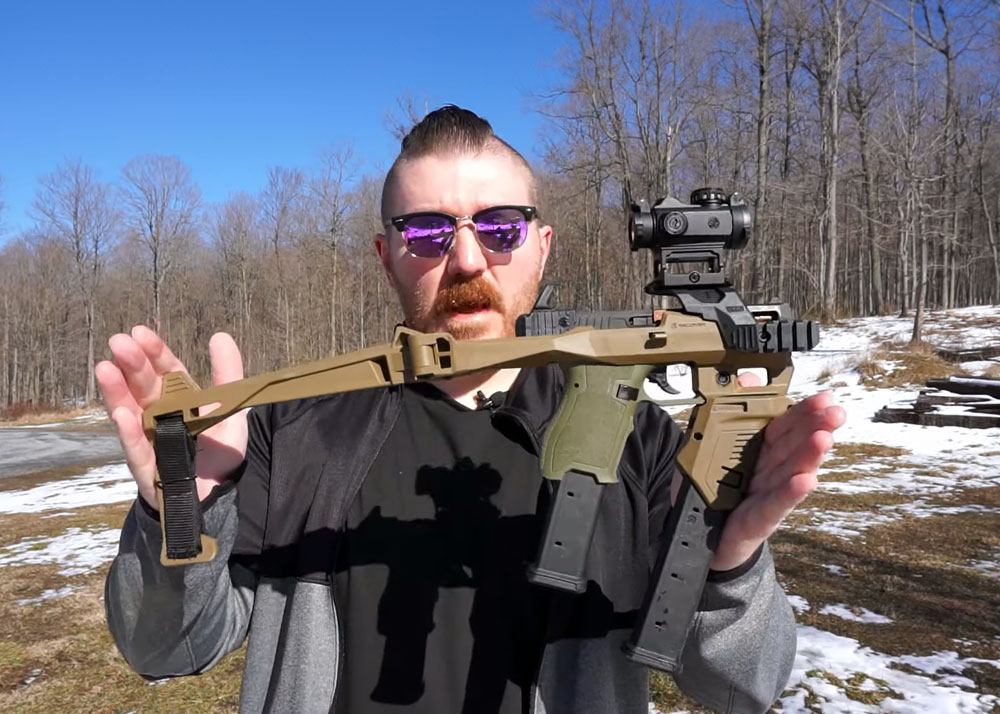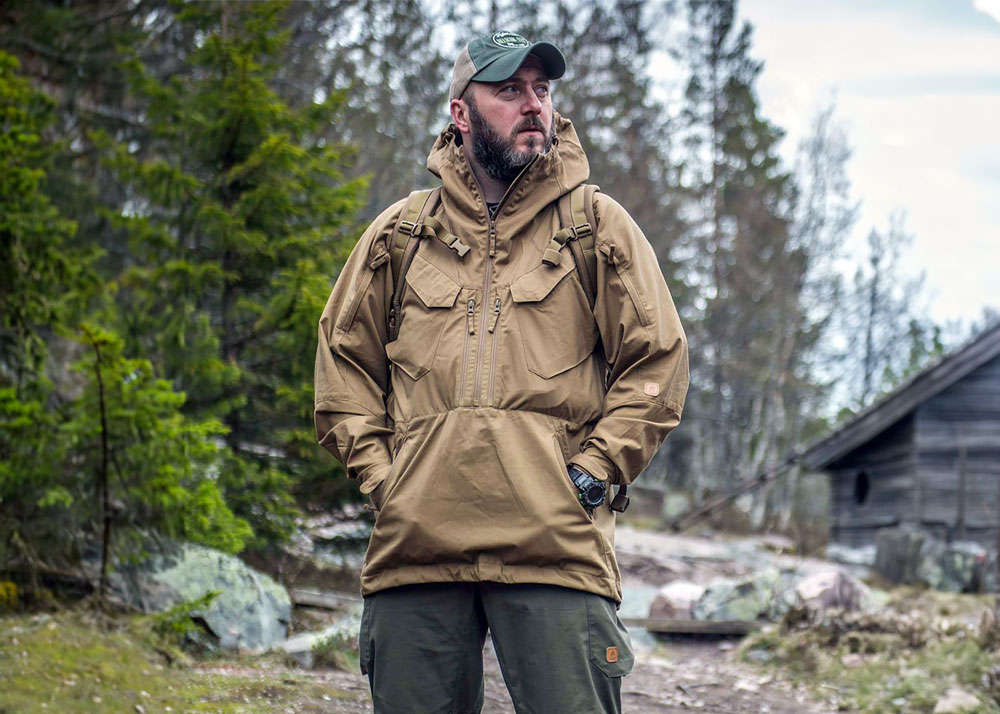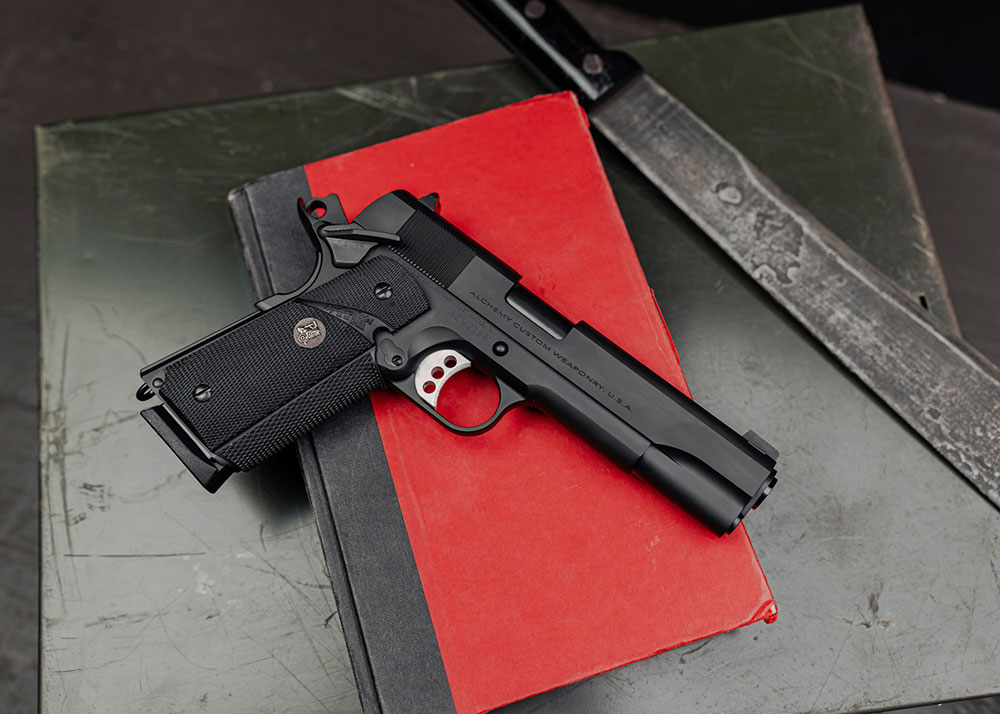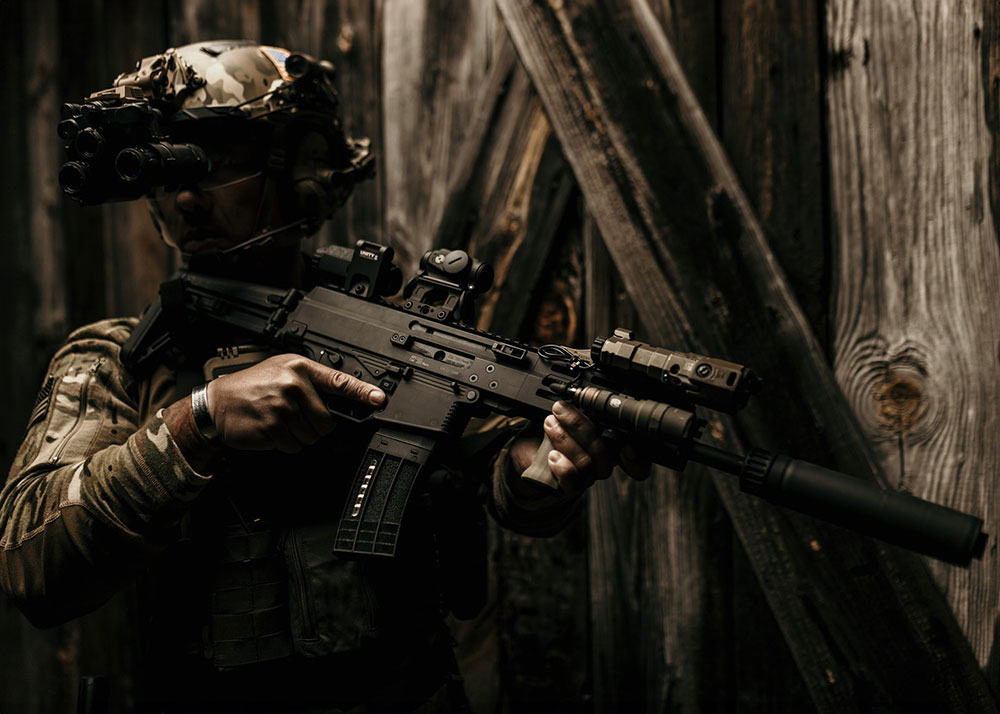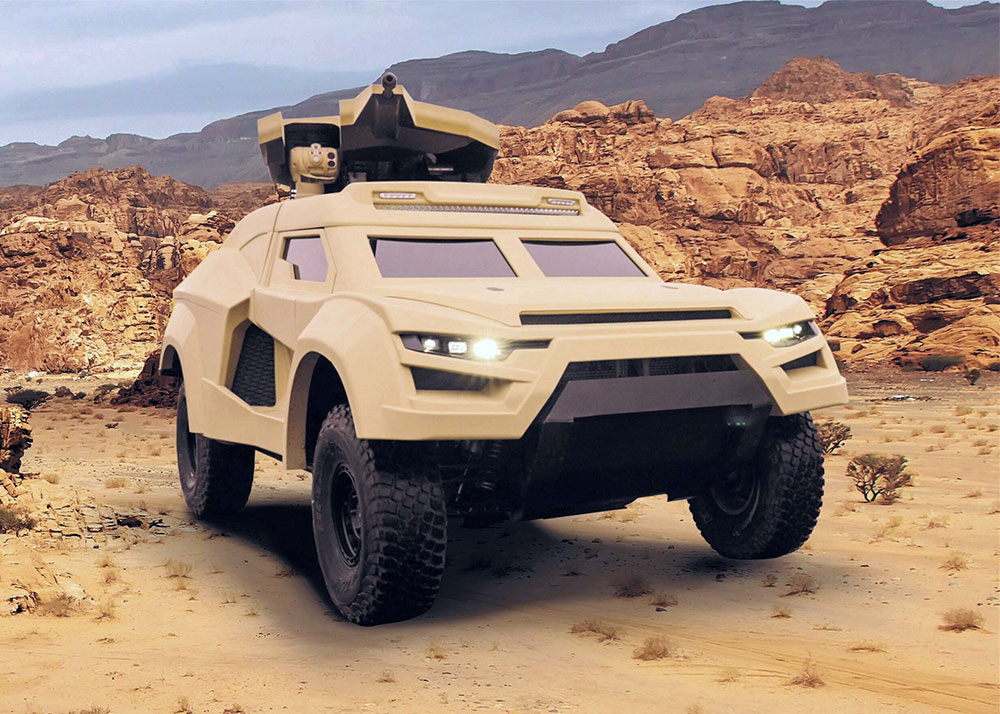RS Wiki: Close Quarters Battle (CQB)
Gungho Cowboy
21 Apr 2008
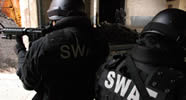
"So what's cooking up with the upcoming issue of the Popular Airsoft Magazine?" I asked Optimus Prime who seems to be right now in a do-not-disturb mode since they're already deep into production of the May 2008 issue. They're quite silent about what they're about to release and always want to make some surprises, even I myself included is surprised by their stories. I wondered if he would tell me a thing or two on what's happening. But then Optimus Prime blurted out three letters: C-Q-B.
Now it's out of the bag. He requested me if I can make a prep up of the readers of Popular Airsoft on Close Quarters Combat. Being the lazy-bone that I truly am, Wikipedia has now become my eternal and infinite source of wisdom. So here it goes, the Wikipedia entry on Close Quarters Combat.
Close Quarters Battle (CQB) or close quarters combat (CQC) is a type of fighting in which small units engage the enemy with personal weapons at very short range, even to the point of hand-to-hand combat. In the typical CQB scenario, the attackers try a very fast, violent takeover of a vehicle or structure controlled by the defenders, who usually have no easy way to withdraw. Because enemies, hostages/civilians, and fellow operators can be closely intermingled, CQB demands a rapid assault and a precise application of lethal force. The operators need great proficiency with their weapons, but also the ability to make split-second decisions in order to limit friendly casualties. CQB is defined as a short duration, high intensity conflict, characterized by sudden violence at close range.
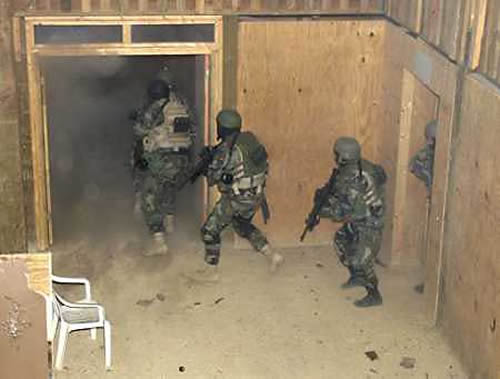
Criminals sometimes use CQB techniques, such as in an armed robbery or jailbreak, but most of the terminology comes from training used to prepare soldiers, police, and other authorities. Therefore, much CQB material is written from the perspective of the "good guys" who must break into the stronghold where the "bad guys" have barricaded themselves.
Although there is considerable overlap, CQB is not synonymous with urban warfare, now sometimes known by the military acronyms MOUT (military operations on urban terrain), FIBUA (fighting in built-up areas) or OBUA (Operations in Built Up Areas) in the West. Urban warfare is a much larger field, including logistics and the role of crew-served weapons like heavy machine guns, mortars, and mounted grenade launchers, as well as artillery, armor, and air support. In CQB, the emphasis is on small infantry units using light, compact weapons that one man can carry and use easily in tight spaces, such as submachine guns, shotguns, pistols and even knives.
Principles of assault
Detailed planning
Ideally, the leader of the assault team gathers all available intelligence about the crisis scene, targets, and innocents. He diagrams and discusses the proposed plan, outlining each team’s actions and responsibilities, location, fields of fire, and special tasks (even to the point of a wall-by-wall and door-by-door layout of the objective, where available). Since the assault team usually already has specialized training, the operation is based on well-understood, pre-established standing operating procedure. When considerable preparation time is available, the team sometimes conducts step-by-step walk-through exercises on a mock-up that duplicates the target environment. Some units maintain permanent "shoot houses" or even airliner/ship mock-ups for practicing marksmanship and tactics more realistically.
In a prolonged standoff, the attackers can sometimes bring in specialized equipment for probing the inside of a well-defended area. Sensitive thermal cameras can help locate the occupants, and surveillance personnel can run microphones and fiber-optic cameras through walls, ceilings, and floors. The "throw phones" used to establish contact between authorities and suspects often contain hidden cameras or infrared illuminators for added intelligence-gathering. If hostages escape or can communicate/signal the attackers, they can provide more information from inside.
However, the time and resources to carry out such luxurious preparations are not always there. Not every attacker can field an overwhelming force of specially trained and equipped men with reinforcements standing by. Information about the inside of an enemy-held building or vehicle may not be accessible beyond studying it through binoculars or a rifle scope. While some attackers can go to the lengths of wearing the enemy down by siege or even tunneling under them, others must get the current job done immediately with the force available in order to move on to the next.
Surprise
The objective is to complete all offensive action before the party being engaged is able to react. To gain this element of surprise, the entry teams use stealth movement and noise/light discipline to get as close to the targets as possible, hopefully putting themselves in a position to engage an enemy from the moment he becomes aware of them. Some teams use subsonic sniper rifles for their initial shots on sentries or dogs.
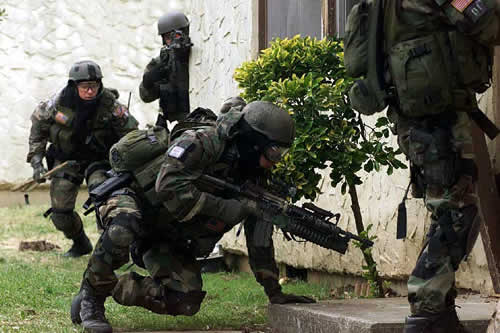
An assault should come at a time when least expected, taking into consideration fatigue, normal sleep periods, and other factors that detract from the target's alertness. Diversions are an essential element in achieving surprise. Staged emergencies, such as a mock auto accident, fire, or explosion near the crisis site, can divert the target's attention away from the assaulting elements. Explosive breaching and diversionary devices, such as flash bang, smoke, or gas grenades can be employed to distract and disorient the targets. Negotiators can try to manipulate the defenders into a more vulnerable position or convince them that their position will not be stormed.
Methods of entry
When law enforcement clears a building, they usually work in a slow and deliberate manner using ballistic shields and mirrors for searching. This affords the highest degree of safety and security for the police, as well as any uninvolved bystanders inside the search area, who can be identified and safely removed without subjecting them to the shock and danger of a sudden assault. When suspects are encountered, the police can confront them with an alert, armed force and try to take control without shooting. If the searchers meet heavy resistance, they can usually pull back without harm and prepare for a dynamic entry.
However, against determined, well-armed opponents who fight in concert to defend an area and keep it under their control, slow stop-and-go movement can cause the deaths of many attackers and hostages. That leads to dynamic entry, used in military operations or hostage rescues. It is the popular image of CQB: a flood of gunmen who burst in without warning and attempt to seize the area. Dynamic entry tactics must be rapid and aggressive, ideally a continuous flow using overwhelming force that does not stop until the threat is eliminated.
In the vast majority of hostage rescue and other dynamic CQB operations, it is desirable to use multiple simultaneous attacks from different entry points to overload the target's ability to react effectively. The more entry points the attackers can choose from, the better their chances. The teams actually entering the objective usually have to synchronize with snipers, negotiators, power technicians, perimeter guards, and others who assist from the outside. Medical personnel, investigators, and bomb experts may be prepped to enter the scene as soon as the initial attackers get control.
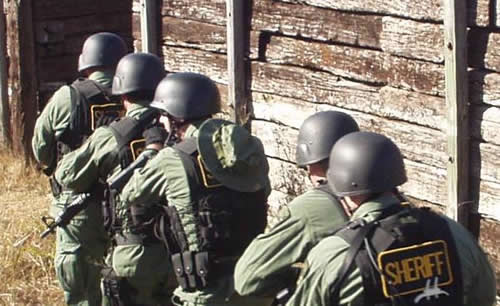
It is important that a central commander coordinate all armed elements, not only to better complete a sweep of the target area, but especially to guard against friendly fire. Most assault rifle bullets can go straight through an enemy and still exit with enough force to kill again, so letting enemies get between two attackers (or attacker and hostage) can easily lead to fratricide. Pistol rounds and shotgun pellets carry less risk of overpenetration through a human body, but on a miss, they can still blast through several sheets of drywall and kill unseen people on the other side. When large areas must be searched, leaders will assign boundaries between elements and track them by radio to ensure they do not interfere with each other. The goal is to establish overlapping fields of fire, so that multiple shooters can attack at once from different directions without danger of hitting one another.
Speed
Once the assault begins, the team must gain control before the target understands what is happening and can prepare an effective defense or mount a counterattack. The defenders sometimes have a contingency plan that could cause the attack to fail instantly, such as killing hostages, detonating bombs, or destroying evidence. If they can execute an organized plan, such as falling back into a prepared stronghold, or breaking through the perimeter, the possibility of friendly casualties increases. Speed is achieved through well-designed tactics, such as gaining proximity with an undetected approach, the use of multiple entry points, and explosive breaching. Note that the need for speed does not necessarily translate to individual operators choosing to run in these situations.
Violence of action
For the dynamic entry team, gaining and maintaining physical and psychological momentum is essential. They smash down doors, blast holes in walls, come through windows, and drop from helicopters. Vehicle-mounted rams and platforms are used to create unexpected entry points. The sensory onslaught from tear gas, explosive breaching, flashbangs, and gunfire is complemented by the intimidating and aggressive actions of the assault team. Hostiles do sometimes hide among the hostages, so once the shooting has stopped, operators must maintain dominance over anyone still alive.
The defenders try to stop enemies close to the entry points. The "fatal funnel" is the dangerous area where the assaulter is silhouetted against his own entry point from the perspective of defenders inside the room. Once operators begin to enter, the defenders try to keep them from escaping the fatal funnel. The attackers are also vulnerable from the corners closest to the entry point, the first place from which they can be hit from behind as they enter the room. If the first attackers cannot clear the corners and get out of the fatal funnel, allowing those behind to move in and help, the attack can bog down.
Military uses of close quarters battle vary by unit type, branch and mission. Military operations other than war (MOOTW) may involve peacekeeping or riot control. Specialized forces such as the U.S. Marine Corps FAST companies and U.S. Marine Corps special operations teams such as Recon and MSOB platoons, U.S. Coast Guard or U.S. Navy VBSS (Visit, Board, Search, and Seizure) teams may adapt CQB tactics to their specific needs, e.g. for the boarding compliant and non-compliant vessels at sea. Hostage rescue or extraction by commando troops such as the British or Australian Special Air Service, Delta Force or U.S. Navy SEALs may involve even more esoteric adaptations or variations, depending on specialized environments, weapons technology, political considerations or a mixture of friendly, unfriendly or civilian personnel.
Armies that often engage in urban warfare operation may train most of their infantry in basic CQB doctrine as it relates to common tasks such as building entry, "clearing a room" and concussion and other grenades.
Police
Domestically, police crisis response teams (CRTs) are the primary groups to engage in CQB. Situations involving the potential for CQB generally involve extraordinary threats outside of conventional police capabilities, and thus CRTs are specifically organized, equipped, and trained to respond to these situations. These situations often require the special tactics and techniques involving building entry and room clearing procedures that are the hallmarks of CQB.
Police CQB doctrine is also specialized by unit type and mission. Riot control, corrections, the FBI Hostage Rescue Team and SWAT teams, for example, each have different goals, but may make use of similar tactics and technology such as non-lethal force. A prison, for example, may have a squad which specializes in high-risk cell extractions, and psychiatric hospitals or wards often have similar specialized teams. Among the "less-than-lethal" tools and tactics central to police CQB are electroshock guns, pepper spray, riot shields and riot guns to fire tear gas, rubber bullets, plastic bullets or beanbag rounds. All so-called "less-lethal" weapons can inflict injuries which may cause death.
Private industry
Private corporations engaged in security or military operations overseas maintain internal CQB teams. For example, these teams might be responsible for responding to an incident at a facility operated by a government agency who has engaged the contractor's services. That team would then act as the Crisis Response Team (CRT) and "clear" the facility of threats or hostiles. In another example, Military corporations or Private military contractor might be employed to provide protection for high-ranking diplomats or military officers in war zones.

